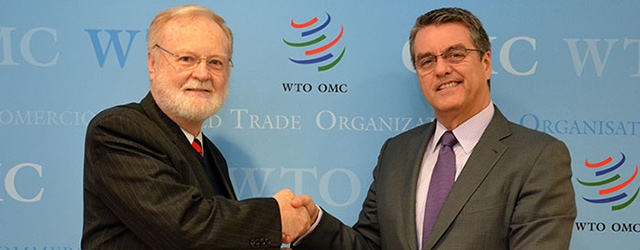Ratified by more than 110 of 164 member countries, the Trade Facilitation Agreement (TFA) has gone into force, launching “a new phase for trade facilitation reforms all over the world,” according to the WTO.

At a time when some multilateral trade agreements are being abandoned, a new Trade Facilitation Agreement (TFA) has been ratified by more than two-thirds of the 164 member countries of the World Trade Organization, crossing a threshold that enters it into force. Chad, Jordan, Oman, Rwanda, the Dominican Republic and Guatemala are the latest of the 114 countries, as of this writing, that have ratified the WTO pact reached in Bali in December 2013—the first multilateral deal concluded in the 22-year history of the WTO.
“By ratifying the agreement, WTO members have shown their commitment to the multilateral trading system,” says Roberto Azevêdo, director-general of the WTO, who was recently reappointed to a second four-year term.
According to Azevêdo, the agreement is meant to streamline customs processes in order to reduce the cost of trade. “Estimates show that the full implementation of the agreement could reduce trade costs globally by an average of 14.3%,” he says, and the least-developed countries could access 60% more foreign markets on average, making them less vulnerable to external economic shocks. “By 2030, the agreement could add 2.7 percentage points per year to world trade growth and more than half a percentage point per year to world GDP growth,” he adds. “This impact would be greater than the elimination of all existing tariffs around the world.”
Thomas Donohue, president and CEO of the US Chamber of Commerce, sees the agreement as a welcome shot in the arm. “Some of the biggest beneficiaries will be American small and medium-size businesses,” he says. “They are the backbone of our economy, but their exports too often get tied up in the maze of bureaucratic and international border procedures.”
The WTO estimates the TFA could boost world trade by $1 trillion a year, and the International Chamber of Commerce says it could help create some 20 million jobs worldwide. The United States ratified the agreement in January 2015.
US president Donald Trump signed an executive order to withdraw the United States from the Trans-Pacific Partnership in January, calling it bad for American workers. Donohue says the TFA makes it easier for small businesses to export, something that Trump has favored. “Tariffs aren’t the only barrier to increased trade,” he says.



